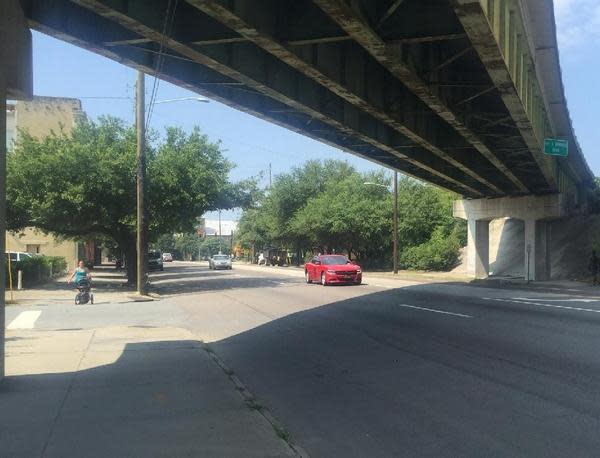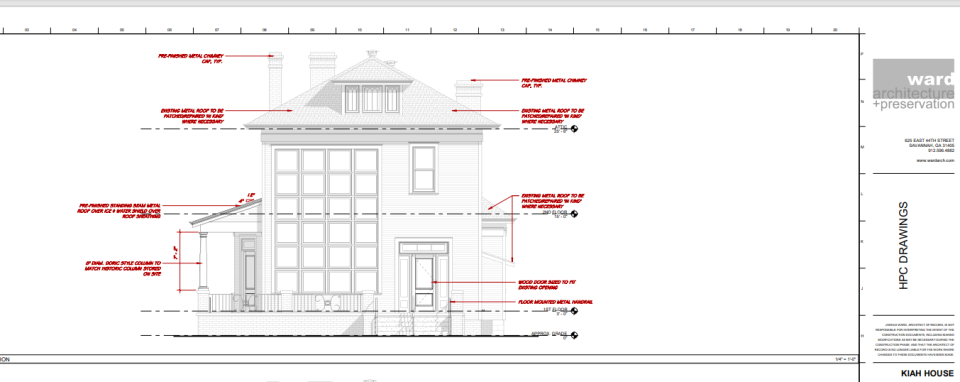City roundup: Savannah council greenlights study for MLK flyover removal, Kiah House zoning

At its Thursday meeting, Savannah City Council took the next step in potentially removing the Interstate 16 flyover ramp that overpasses Martin Luther King Jr. Boulevard, approving grant money for the Georgia Department of Transportation (GDOT) to study the project's feasibility.
The city submitted a grant in September 2023 to the U.S. Department of Transportation's Reconnecting Communities and Neighborhoods program for project planning money. Thursday's action by council approved a Memorandum of Agreement between Savannah and GDOT for $750,000 of the federal funding and preliminary engineering studies. The move comes with a $180,000 local match.
The city's Department of Transportation grant submission requested a total of $1.8 million in planning funds that would include a $450,000 local match. The long-term intent of the project is to potentially restore Savannah's historic grid and reconnect neighborhoods divided by the flyover when it was built in 1968, said City Manager Jay Melder.
"City staff firmly believes that the removal of this flyover would be a big positive benefit, not only to the communities surrounding that flyover but to our overall traffic patterns," Melder said.
City council also had a few other actions at Thursday's meeting including passing the 2024 budget, approving new zoning for Kiah House restoration and holding a first reading for ordinance amendments that would raise review standards for subdivisions within the Downtown Historic District Overlay.
Potential for new subdivision review standards
The item before council Thursday proposed amendments to two separate ordinances: one for the city's zoning ordinance and another for the subdivision ordinance. The proposed changes would create a public hearing process for subdivision and recombination petitions within the district, and also allowed the Savannah Metropolitan Commission's Historic District Board of Review to review those petitions.
Council decided to move the vote for final approval to a future meeting, but Mayor Van Johnson signaled support for the measure. The item had broad support from community stakeholders such as the Downtown Neighborhood Association, Historic Savannah Foundation, and the Oglethorpe Plan Coalition.
"It's very important for the public to be able to have a say, to be able to bring important issues to the attention of decision makers," said Andrew Jones, president of the Oglethorpe Plan Coalition.
The proposed amendments would require a certificate of appropriateness for these types of petitions to be approved. The process for a certificate of appropriateness also has a posted public notice mandate. The public notice requires signage on any property petitioned to be subdivided or recombined within the district.
Having the petitions go through the Historic District Board of Review (HDBR) also creates an extra opportunity for public hearings on the petitions. The HDBR would also have to review and approve any certificate of appropriateness.
New certificate of appropriateness standards under the amendments would require subdivisions and recombinations be consistent with the "prevailing historical context and lot patterns" within the area. One final addition to the standards would prevent contributing resources from being subdivided or combined unless the changes create parcel configurations that existed when the resource was constructed.
One objection to the measure was the proposed changes did not go through the Metropolitan Planning Commission's Planning Commission for review. Another critique of the item came from At-Large Post 1 Alderwoman Kesha Gibson-Carter, who said her concern was that the increased review standards did not extend to the whole city.
"Since my time on council I have seen sacred land throughout the City of Savannah desecrated or either threatened," Gibson-Carter said, noting the Weeping Time property and Yamacraw Village as a couple examples.

Kiah House zoning
Council also unanimously approved a zoning change and future land use map amendment to allow the Kiah House's use as a museum once the property is restored. Since city council approved a $500,000 partnership with the Galvan Foundation in September, Kiah House items have been bustling their way through Savannah's governmental bodies.
The same zoning measure passed the MPC on Nov. 7, and restoration plans made it through the Historic Preservation Commission on Nov. 20. Restoration of the building itself will retain or restore features of the home from the period Virginia Kiah operated the museum.
Some of those features include restoring the Victorian wraparound porch and the two-story front window. The window will feature 24 squares and was designed to give glimpses of the museum inside. Interior features will retain steel stair rails and the two-story mezzanine, all implemented by Kiah.
Evan Lasseter is the city and county reporter for the Savannah Morning News. You can reach him at ELasseter@gannett.com.
This article originally appeared on Savannah Morning News: Savannah City Council approves MLK flyover study

